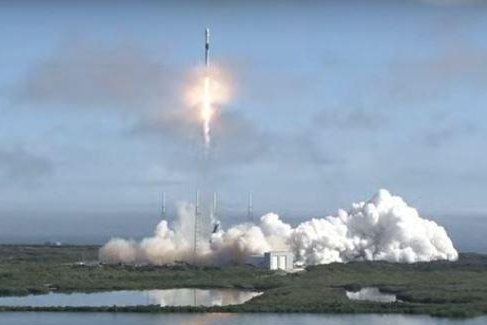ORLANDO, Fla., Feb. 17 (UPI) -- SpaceX launched its fifth batch of Starlink satellites from Florida at 10:05 a.m. EST Monday, growing the Starlink constellation in orbit to more than 300.
The Falcon 9 rocket launched 60 satellites into a cloudy sky from Launch Complex 40 at Cape Canaveral Air Force Station, Fla.















